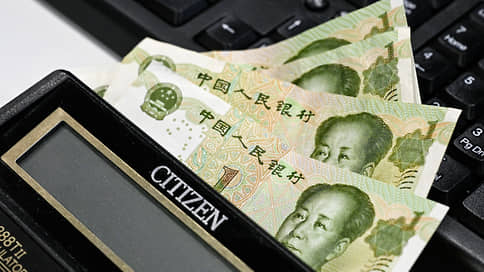How Russian banks lend to clients in Chinese currency
[ad_1]

The terms of yuan loans are decreasing, according to data from the Bank of Russia. If back in October the share of loans in yuan up to a year accounted for less than half of all loans in yuan, then at the end of December it was 58.5%. At the same time, banks issue the most expensive loans – at 7.48% on average – for a period of up to three years. Financiers and experts expect growth in yuan lending this year, even despite problems with liquidity in the Chinese currency, which banks recorded in early February, but loans will cost borrowers more and more.
According to the Bank of Russia data on the structure of lending in yuan, the share of loans up to one year at the end of December 2023 accounted for 58.5% of all loans issued. Moreover, back in October such loans accounted for less than half of the issuances – 49%, in November – 52.01%. Thus, there is a trend towards a reduction in borrowings by companies in Chinese currency.
According to the Central Bankthe maximum weighted average rates on loans in yuan in December 2023 were for a period of one to three years – 7.48%, the minimum – 5.01% for a period of more than three years.
Average corporate lending rates in yuan rose throughout 2023, but moved in the opposite direction from rates in China. “An increase in the difference between yuan rates on the Russian and Chinese financial markets may encourage participants with access to yuan financing to conduct arbitrage operations,” the Central Bank warned (.pdf).
At the end of 2023, an increase in lending to legal entities in yuan was recorded by 3.6 times – to $46.1 billion. Moreover, in the fourth quarter of 2023, the increase in loans in yuan exceeded the reduction in the loan portfolio in dollars and euros.
The further potential for increasing yuan lending for Russian banks is limited, since there are few yuan and the rates on them for long periods are prohibitive, warned the first deputy chairman of the board of VTB, Dmitry Pyanov, in early February. Sberbank also announced a shortage of yuan liabilities.
“Currently, the demand of corporate clients for lending in yuan is tens of times greater than the already formed volume of the portfolio,” notes Expobank CFO Ernst Becker. “Borrowers are trying to extend the repayment period of the portfolio in yuan, but there is an objective shortage of long-term liabilities in yuan in the market, since the main the volume of resources in banks is formed due to balances in the accounts of corporate clients, which form balances for making payments.” At the same time, in his opinion, this year the Russian market will see a sharp increase in lending in yuan, which is associated both with the replacement of portfolios in the currencies of unfriendly countries, and with an attempt by borrowers to reduce the cost of borrowing due to the very high rate on ruble loans.
Dmitry Pyanov, first deputy chairman of the board of VTB, February 8:
“Yuan lending now in any major Russian bank is a privilege that must be earned.”
“We can expect the relatively high dynamics of yuan lending to continue this year,” agrees the managing director of the NKR rating agency, Mikhail Doronkin. “The dynamics of rates on yuan loans will largely depend on the access of Russian banks to appropriate liquidity.”
According to Yuri Belikov, managing director of the Expert RA rating agency, lending rates in yuan are much more attractive than current ruble rates. “A small spread in the rates of short and long yuan loans can be quite convenient for borrowers, since it simplifies the management of appropriate funding and allows, when choosing the maturity of loans, to proceed from planned financial flows, and not from the spread of the cost of resources of different maturities,” he explains. – Loan Portfolio in yuan is likely to continue to grow in 2024, but its growth rate may slow down.”
Mr. Belikov believes that the current cost of ruble funding for Russian banks may become a limiting factor, despite the fact that the growth rate of medium-term and long-term deposits in yuan, which can be used to fund active lending operations, may be volatile and on average not very high. Accordingly, the expert explains, rates on loans in yuan may continue to rise, making the corresponding lending less accessible than last year.
[ad_2]
Source link





